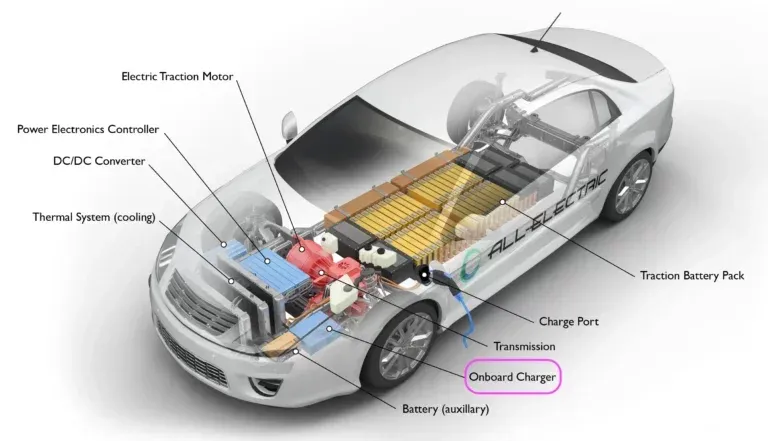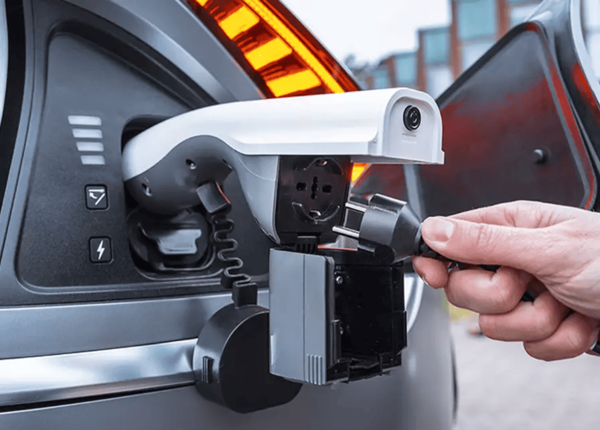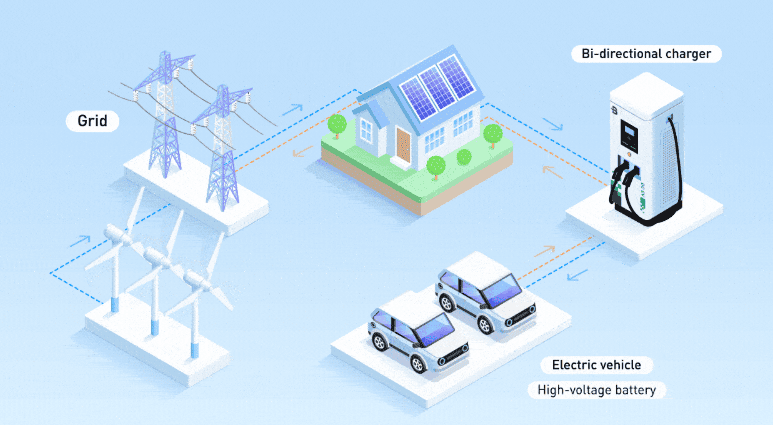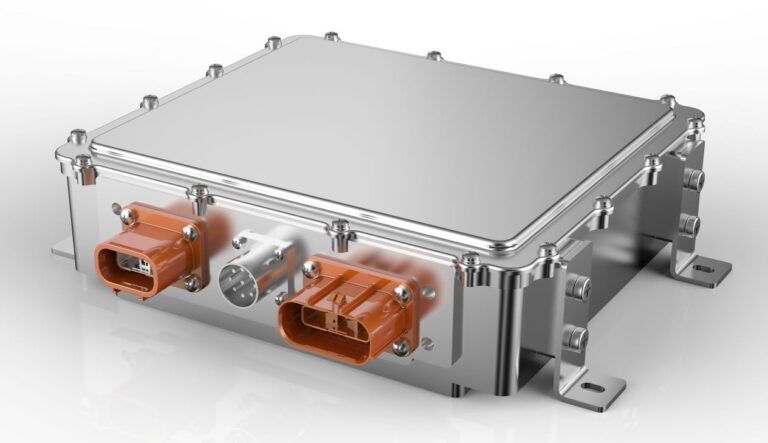As electric vehicles (EVs) become increasingly popular, understanding the components that make EV charging possible is essential for both users and manufacturers. One of the most critical components in the charging process is the On-Board Charger (OBC). This device plays a crucial role in converting the alternating current (AC) power from charging stations into the direct current (DC) power required to charge an EV's battery. In this article, we will explore the function, design, and significance of the On-Board Charger (OBC), along with a comparison between on-board and off-board chargers, and the differences in charging speeds and battery life impacts.
An On-Board Charger (OBC) is an electrical device installed inside an electric vehicle (EV) or plug-in hybrid electric vehicle (PHEV) to convert AC power from the EV charging station into DC power for the vehicle's battery. Since EV batteries only store direct current (DC), and the electricity from the grid is always alternating current (AC), the OBC performs the essential task of converting the incoming AC power into DC that can be used to charge the battery.
The output power of an OBC generally ranges from 3.3 kW to 22 kW, depending on the model and capacity of the vehicle. Smaller EVs tend to have lower charging capacities (typically 3.3 kW to 7 kW), while premium electric cars can support 11 kW to 22 kW charging capabilities.
A significant advantage of the OBC is that it allows EVs to be charged using standard household outlets (AC power), making it a convenient solution for home charging. However, this AC-to-DC conversion only occurs when the vehicle is connected to an AC charging source, such as at home or at a public Level 1 or Level 2 charger.

The primary function of the OBC is to manage the entire charging process from the power grid to the vehicle's battery. The OBC ensures that the battery is charged efficiently while preventing battery degradation. It handles two types of charging processes:
This method delivers a consistent current to the battery, which charges the battery faster. However, it cannot fully charge the battery, as the voltage increases over time and the battery reaches its charge limit.
Also known as trickle charging, this method allows for slower, more controlled charging. This approach ensures that the battery reaches its maximum capacity without the risk of overcharging or damaging the cells.
To optimize charging time, the OBC typically uses constant current charging at the beginning of the charge cycle, where the battery is empty and can handle higher currents. As the charge cycle progresses, the OBC switches to constant voltage charging, reducing the current to ensure the battery reaches a full charge safely.
In recent years, bi-directional charging technology has been integrated into some modern EVs. This allows the OBC to convert DC power from the vehicle's battery back into AC power. This functionality enables several important features:
Vehicle-to-Load (V2L) technology allows electric vehicles to repurpose their stored energy to power external devices or systems. Essentially, it transforms your EV into a portable power source, capable of supplying energy to anything from household appliances to campsite setups, depending on the vehicle’s battery capacity and the V2L system in place.

Vehicle-to-grid, or V2G, technology is smart charging tech that allows car batteries to give back to the power grid. In essence, it treats these high-capacity batteries as not only tools to power EVs but backup storage cells for the electrical grid.
This type of setup uses bidirectional charging stations to push and pull energy to and from connected vehicles based on the demand for electricity at any given time. It’s part of a larger initiative known as vehicle-grid integration. This extra energy can be used to power houses, buildings and ultimately anything connected to the power grid.

This feature allows an EV to power a home, providing backup electricity during power outages or times of need.
The OBC's integration of bi-directional charging plays a pivotal role in making EVs more energy-efficient and versatile, particularly in the context of smart grids and home energy management systems.
The power output capacity of an OBC is often divided into single-phase and three-phase systems, which directly affect the charging speed and overall performance.

These chargers are typically used in residential settings and support maximum DC charging rates of 3.3 kW to 7.2 kW. They are most commonly found in compact and mid-range EVs, such as the Nissan LEAF, Hyundai Ioniq, and Kia Soul.
These chargers support higher power levels, with charging rates ranging from 11 kW to 22 kW, enabling much faster charging. Premium EV models, like the Jaguar I-Pace, Porsche Taycan, and Polestar 4, feature three-phase OBCs to support these higher charging speeds. Three-phase OBCs are often used in public charging stations or commercial applications due to their ability to charge EVs more quickly.
For example, Tesla vehicles, including the Model 3, Model S, and Model Y, are equipped with 11 kW three-phase OBCs, enabling faster home charging compared to standard single-phase options.
The OBC operates by converting AC power into DC energy. Here's a simplified explanation of how the process works:
The OBC receives AC power from an external source, typically a residential outlet (Level 1) or a public charging station (Level 2). The voltage and current from this source can vary, depending on the type of charging infrastructure.
The OBC converts the AC power into DC power using rectifiers. This is because the EV’s battery can only accept DC current for charging.
The OBC ensures that the DC voltage matches the specific requirements of the EV’s battery. This is done through a voltage controller to ensure optimal charging without overcharging or damaging the battery cells.
Once the AC power is converted into regulated DC power, it is fed into the vehicle's battery to charge it. The charging process continues until the battery reaches its designated capacity.
It’s important to differentiate between on-board chargers (OBC) and off-board chargers (like those in DC fast charging stations).
On-Board Charger (OBC): Installed within the vehicle itself, OBCs are compact and designed to work with standard AC charging stations. Their primary advantage is convenience, as they allow for charging anywhere with an AC power source.
Off-Board Charger: Located in the charging station, off-board chargers (such as DC fast chargers) handle the conversion of AC to DC before the power reaches the vehicle. This significantly reduces charging time as the vehicle does not need to perform this conversion internally.
On-Board Charger: Typically provides slower charging speeds due to the limitations of the vehicle’s internal charger and AC power. Charging rates range from 3.3 kW to 22 kW, depending on the vehicle and OBC type.
Off-Board Charger: DC fast chargers are much faster, delivering up to 150 kW or more of charging power. This makes them ideal for long-distance travel and public charging infrastructure.
On-Board Charger: The use of an OBC ensures that the vehicle’s battery is charged in a way that minimizes wear and degradation over time. By using methods like constant voltage and constant current charging, the OBC helps maintain the health of the battery.
Off-Board Charger: DC fast charging can be more aggressive on the battery, especially if used frequently. It charges the battery quickly but can generate more heat, which may lead to faster degradation of the battery if overused.
The On-Board Charger (OBC) is a fundamental component in the charging process for electric vehicles. It allows for efficient conversion of AC power into DC power for the vehicle’s battery, enabling the use of standard household outlets or public charging stations. The OBC’s ability to handle both constant current and constant voltage charging ensures that batteries are charged quickly yet safely, optimizing battery life and performance.
As bi-directional charging capabilities expand, OBCs will continue to play a vital role in making electric vehicles more versatile, with potential applications for Vehicle to Grid (V2G) and Vehicle to Home (V2H) energy systems. With single-phase and three-phase OBCs available, EV owners can choose charging speeds that suit their needs, whether at home or at public stations.
Understanding the differences between on-board and off-board chargers is crucial for making informed decisions about EV charging options. Ultimately, the OBC is integral to the functionality and convenience of electric vehicle ownership, ensuring a smooth and efficient transition to a cleaner, more sustainable future.
